Central in Lima is the first Latin-American establishment to triumph in World’s 50Best. In fact, it’s also the first time for a restaurant outside Europe and the US. It is also the first real important acknowledgement for Virgilio Martinez because the Michelin inspectors have still not arrived in Peru (hence the restaurant, which would deserve 3 stars, has none).
This acknowledgement starts from afar, well before 2008 when the restaurant opened in its original location in Miraflor. The idea that an ambitious Peruvian restaurant could offer a proudly local menu – without following French or Italian cuisine – came to Virgilio from master Gaston Acurio, the Incan Gualtiero Marchesi, the chef limeño who first invited himself and his fellow countrymen to forget about foie gras, lobsters and fresh pasta and only use 100% Peruvian ingredients.
«I’ve worked in French restaurants in New York and Europe», Martinez once told us, «and even in Singapore and South East Asia. Once back home, I realised that if I wanted to eat Italian or French food, it only made sense in Italy or France, not in Lima». In other words, we had to create a new model, breaking the rules of classic restaurants: «But to break them», young Martinez pointed out, «you first need to know them».
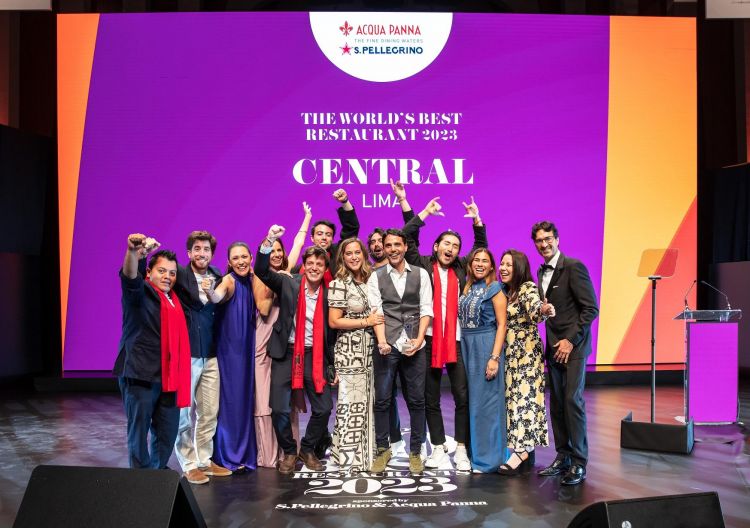
The Central team during the announcement of the award, on the stage of the Ciudad de las Artes y las Ciencias in Valencia. The dedication on Instagram: "Agradecimiento infinito. A los cientos en casa, a los miles y millones en Peru"
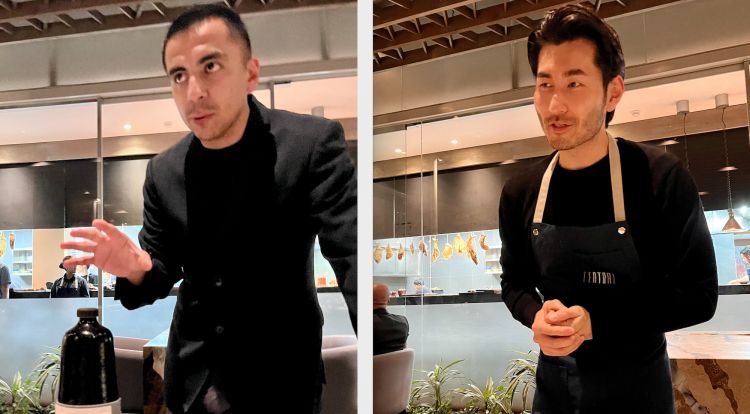
Diego Vasquez Luque, beverage director of the Central group and Korean Sang Jeong, a pillar in the kitchen
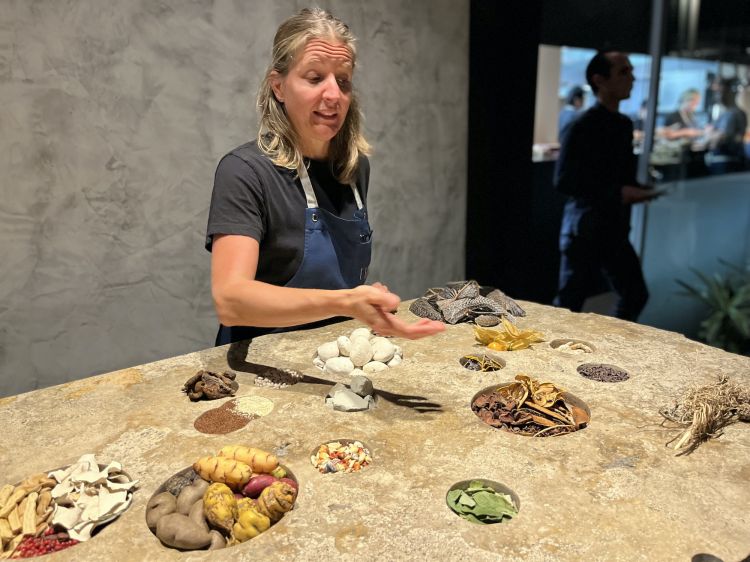
The meal at Central starts with the display of Peru’s edible jewels: potatoes, tubers, wild herbs, maize...
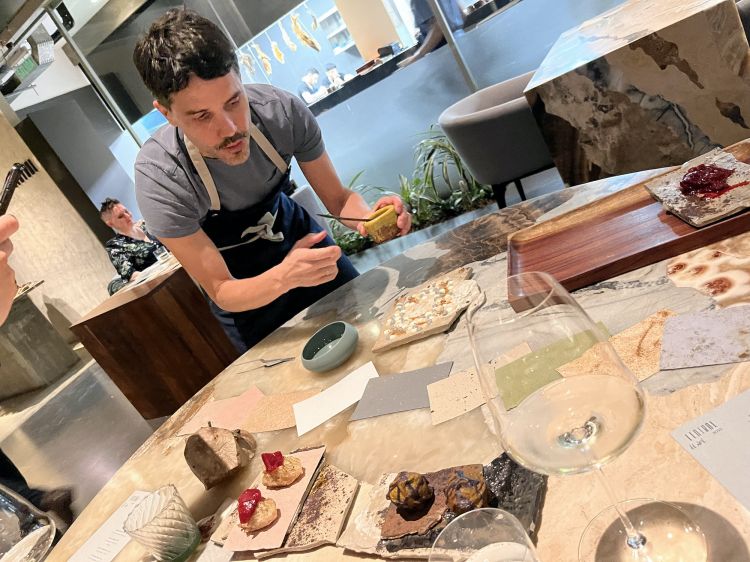
The chef finishes and presents the dishes by the table, a service model that has become very popular in the past two decades
In this movement that ruptures with 20
th century fine dining, the Peruvian chef – like
Massimo Bottura,
Joan and
Jordi Roca or
Rene Redzepi – has learnt and executed the lesson that Catalan
Ferran Adrià taught to the world: every country, whether rich or poor, must look at their own produce to create a culinary dignity, a
local pride, drawing freely from the techniques and processes that the global world makes available to all.
Hence Virgilio, with the crucial complicity of his sister
Malena (
a scientist, here’s a recent interview with her) and wife
Pia Leon (an excellent cook), has been exploring for 15 years the most remote corners of Peru, a country which, of all the 120 ecosystems that science has found around the world, has as many as 87: ocean, desert, valley, mountains, the Andes, the Amazon forest... A summary of the world on a crumpled piece of paper, he has always explained with a very effective image. Because Peru is a country of countless surfaces, a cosmos more complex than the linear series of worlds and seasons that follow each other in California, in the south of France or in the Nordic countries.
Their research traces an edible map of the country, each year richer and more complex. An archaeological-botanical inspection that has built the myth of the legendary 4K species of tubers and potatoes or the countless varieties of maize, two food categories that no cook can truly understand unless they travel to Latin America, their cradle. And then, the tracing of hundreds of wild herbs or local curing herbs, «a submerged world that we never considered because it was easier to go to the chemist’s». The transformations of coffee and cocoa, two foods that can go light years beyond the possibility of espresso and chocolate with which we are stuck on this side of the Atlantic ocean.
These are the pieces that make the mosaic of
Alturas, the only tasting menu at
Central, a restaurant that in 2020 moved to
Casa Tupac, an establishment surrounded by nature in Barranco, the headquarters of
Kjolle too – this is the more casual restaurant, but only in theory: since yesterday, it’s 28
th in the world -, the control unit that applies the philosophy of
Mater Iniciativa and the discoveries of
Mil, the extraordinary Andes project of which we reported
a few weeks ago.
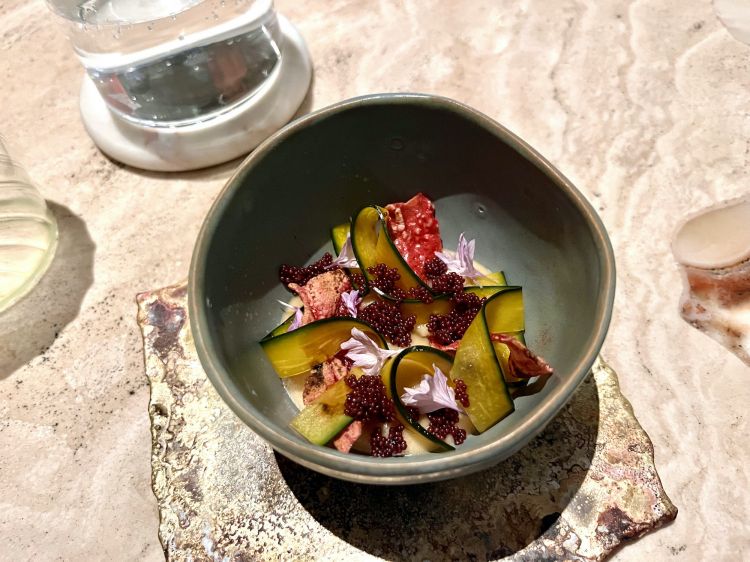
The flawless artistic-chromatic aesthetics of the dishes at Central
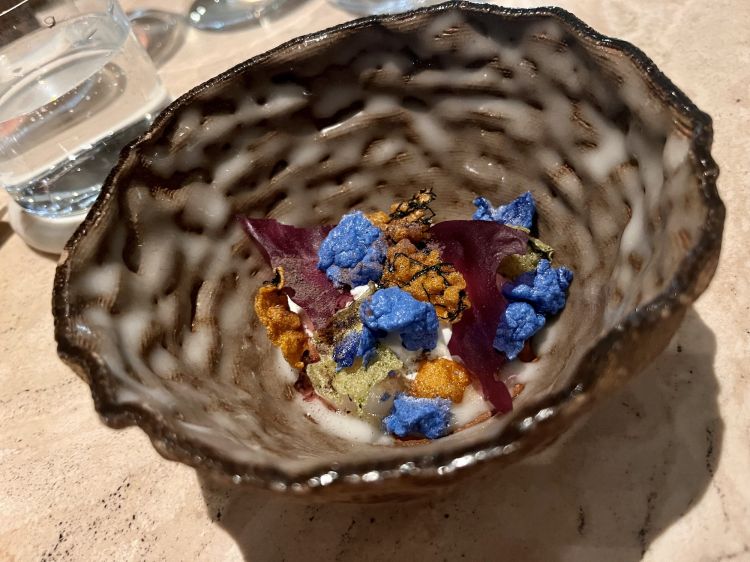
In Central’s pantry you can often find species unknown to the West: tarwi, mashwa, tumbo, chuncho, cushuro...
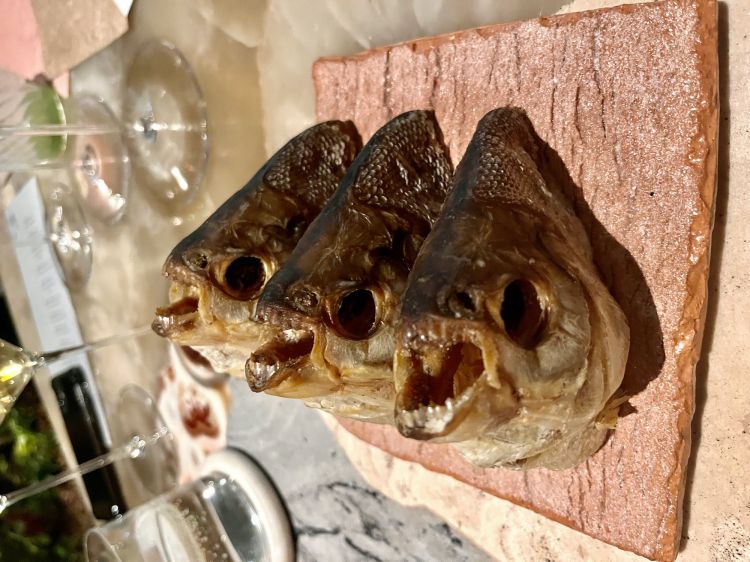
Piranha, an emblem of the Amazon in Virgilio’s cuisine
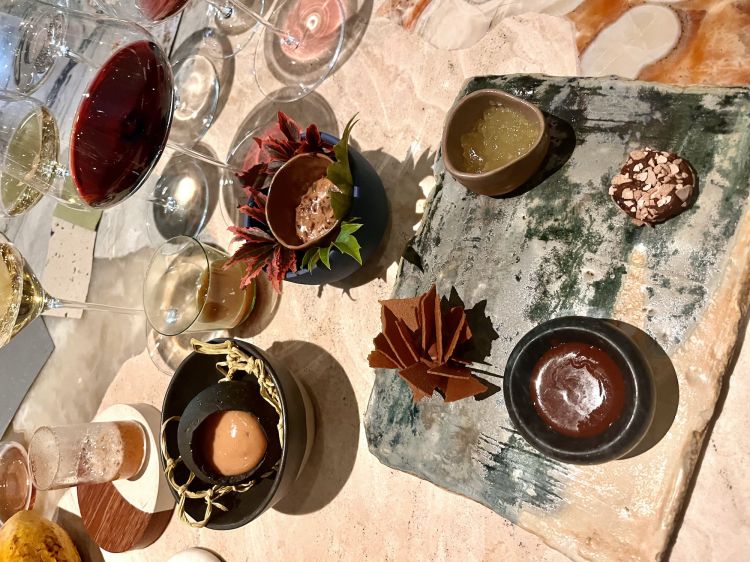
The current menu at Central ends with an exploration of all the components of the cocoa plant
is a menu that travels from the ocean’s abyss to the Andes’ peaks, at 5K metres. A model of vertical research that has set a standard for important restaurants in other Latin American countries, from Colombia to Brazil, who have all suddenly started to map and serve species of animals, plants, leaves, fruits and seeds typical of a specific ecosystem. And which can very well be applied outside the continent too, because, as Martinez is showing, it can be adapted, in its essential principles, even to distant worlds like London (restaurants
Lima and
Lima Floral, which closed with the pandemic),
Maz in Tokyo or
Estero in Playa del Carmen, the group’s recent opening in Mexico. It’s the strength of «
think global and eat local», the cook often says.
A paraphernalia of countless possibilities that gives life to dishes with colourful and complex aesthetics, often-complex services that stir surprise for their profound artistic sense, clearly inherited from his mother, a painter and architect. Frescos of the Peruvian landscape in the shape of gelatines, creams, sauces, and different types of crispiness, that give origin to mostly soft textures, portrayed with an almost Socratic humility: «In fact, we still know but a drop of the ocean of what we could serve».
This is the cuisine grammar behind a leadership, it’s worth remembering, that arrived late possibly because it’s harder to obtain than elsewhere. For two reasons: the cyclical political revolts that affect the country and the geographic position of Lima, which is not exactly as easy to reach as London or New York. Reasons that amplify the huge value of Central.
Translated into English by Slawka G. Scarso